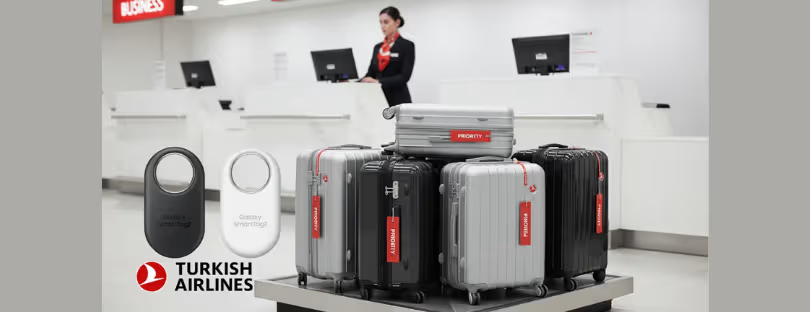
How Metasearch Engines Shape Hotel Distribution (and Why That Matters to You)
Let’s be honest—booking a hotel today is a whole thing. Gone are the days of calling a hotel directly or walking into a lobby and asking for a room. These days, your journey probably starts with Google, TripAdvisor, or a price comparison site. And behind all that? Metasearch engines.
If you’ve ever wondered how hotel prices appear everywhere—on Google, Trivago, Kayak, Priceline and so on—and what this means for both hotels and travelers, you’re not alone. The hotel world has been transformed by metasearch engines. Let’s break it all down, minus the jargon, and talk about how these platforms are actually shaping hotel distribution.
So First, What Is a Metasearch Engine?
Think of a metasearch engine like a matchmaker. But instead of people, it’s matching you—the traveler—with the best hotel deals across dozens of booking sites.
Unlike Online Travel Agencies (OTAs) like Booking.com or Expedia, which take your booking directly, a metasearch engine doesn’t usually complete the booking itself. It searches multiple sites, aggregates all the prices and options in one place, and then sends you off to the chosen booking site to finish the process.
You’ve definitely seen them. Google Hotel Ads, Trivago, Kayak, Skyscanner (yes, they do hotels too), and TripAdvisor are all metasearch platforms.
The Rise of the Meta-Game
Metasearch engines exploded in popularity because travelers—like you and me—got tired of clicking through 10 different tabs trying to find the best hotel deal. Metasearch solves that problem in one place. But the real action happens behind the scenes.
For hotels, metasearch represents both an opportunity and a challenge.
Here’s why.
The Distribution Shift: Hotels vs. OTAs vs. Metasearch
Traditionally, hotels depended a lot on OTAs to fill rooms. Sure, OTAs charge commissions (sometimes as high as 15-25%), but they also offer reach, visibility, and guaranteed traffic. Fair enough.
But hotels started getting smarter. They realized they were losing direct relationships with their guests. And let’s be honest, paying big bucks in commissions hurts the bottom line.
Enter metasearch.
Metasearch engines let hotels bid for visibility right next to OTAs. If a hotel wants to offer a better price directly to the guest, they can. Suddenly, instead of competing blindly against OTAs, hotels can be right there in the search results—side by side.
And that changed everything.
Direct Bookings Are Back (Kind Of)
Metasearch has given hotels a fighting chance to win back direct bookings. You’ve probably noticed those little “Official Site” links popping up next to OTA listings in Google Hotels or Trivago? That’s the hotel itself saying, “Hey! Book with us directly. We’ll give you the same deal or even better.”
Why would a hotel do that?
Because a direct booking:
- Saves them commission fees
- Gives them access to your email (read: loyalty opportunities)
- Lets them upsell services before arrival
- Helps build a long-term relationship with you
So, metasearch isn’t just another distribution channel—it’s a strategic tool.
The Bidding War Nobody Sees
Now, let’s lift the hood a bit.
Behind every hotel result on a metasearch engine is a real-time bidding war. It’s like Google Ads for hotels. Hotels (and OTAs) set a budget and bid to appear higher in the listings. The more they pay per click, the more visibility they get.
But it’s not just about throwing money at the screen. Hotels need to optimize their rates, update inventory in real-time, and make sure their booking engine (the website you land on) converts well. Otherwise, they’re just paying for clicks that don’t turn into bookings.
And guess what? That gets expensive—fast.
The Power Dynamics: Who Really Wins?
While metasearch levels the playing field between OTAs and hotels, the platforms themselves (think Google) now hold a ton of power. Google Hotel Ads, for example, has become one of the biggest players in the hotel discovery space. They control visibility. They set the rules.
And let’s not forget: OTAs are still very much in the game. They’ve got deeper pockets, bigger teams, and better bidding algorithms. Some OTAs even dominate metasearch listings by showing multiple rate types for the same hotel (e.g., free cancellation, breakfast included, etc.).
That makes it even harder for independent hotels to compete—unless they’re super strategic.
What It Means for the Traveler
For you as a traveler, metasearch is mostly great news. You get:
- Transparent price comparison
- More choices
- A chance to book directly with the hotel (often with perks like free upgrades or late checkout)
But it’s not all sunshine. Sometimes the lowest rate isn’t actually the best deal—especially if it comes with restrictive cancellation policies or hidden fees. And too many listings can be overwhelming, especially when they all look the same.
So, a pro tip? Always double-check what’s included in the rate, not just the final number.
What Hotels Need to Get Right
If you’re on the hotel side of things, metasearch isn’t a “set it and forget it” deal. You’ve got to:
- Be present (if you’re not on metasearch, you’re invisible)
- Sync rates and availability in real time (no one likes a bait-and-switch)
- Bid strategically (it’s not about being the highest—it’s about being smart)
- Optimize your direct booking path (fast-loading, mobile-friendly, no friction)
And perhaps most importantly, track ROI like a hawk. If you’re spending €5,000 a month on Google Hotel Ads and not converting bookings efficiently, something’s broken.
Looking Ahead: The Metasearch Arms Race
The lines between OTA, metasearch, and direct booking are blurring. Google is moving deeper into travel. Amazon is flirting with travel again. Even Apple has been dropping hints.
Hotels need to own their data, tell their brand story, and build loyal communities—not just rely on distribution platforms. But let’s face it, metasearch isn’t going anywhere. If anything, it’s becoming the gateway to hotel visibility.
Final Thoughts
Metasearch engines have quietly become the backbone of modern hotel distribution. They sit at the intersection of marketing, pricing strategy, guest acquisition, and tech infrastructure. Whether you’re a global hotel chain or a cozy boutique property, ignoring them is no longer an option.
And if you’re a traveler? Enjoy the price wars—but shop smart.
After all, the best deal isn’t always the cheapest. It’s the one that gets you the stay you’ll actually love.









